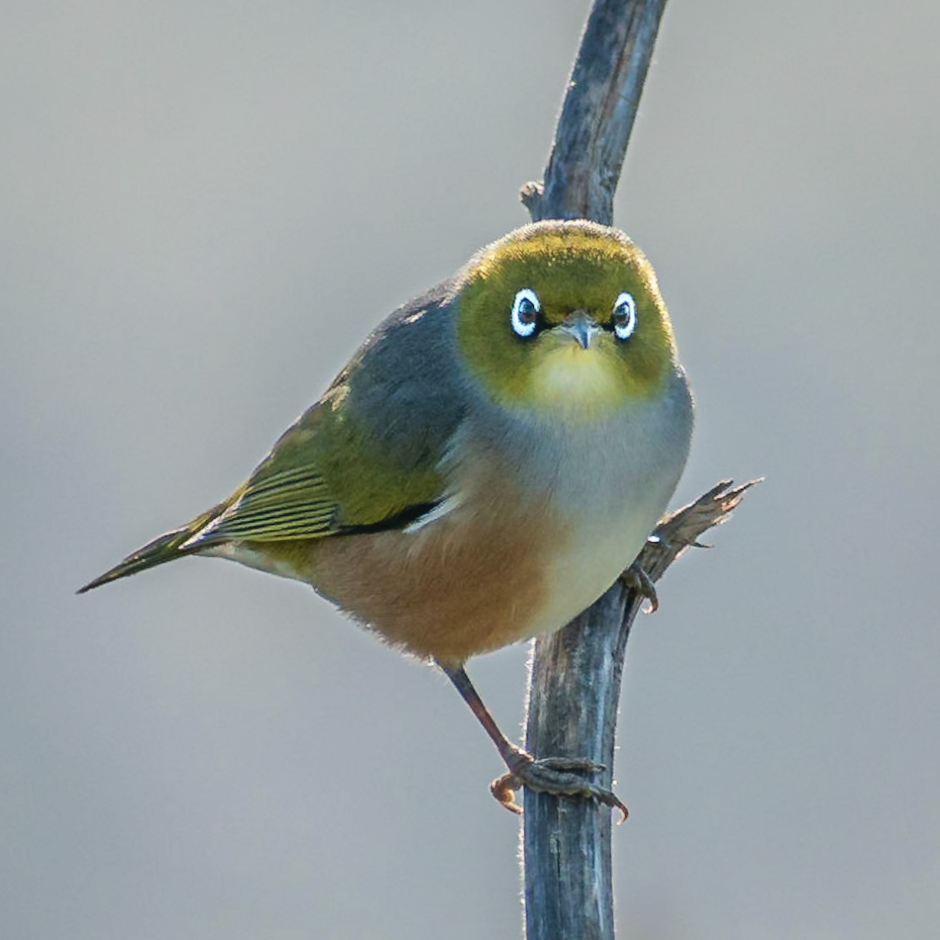Silvereye (Tauhou) - Facts and Info
You are highly likely to be kohabiting with Silvereye already.
Silvereye are one of the most common NZ birds. This means it's highly likely you are kohabiting with them already. They are easy to spot with their beautiful white eye-rings and olive green undies. They are happy little creatures and suddenly appear in your garden in a quarrelsome flock.
Originally from Australia, Silvereyes introduced themselves to New Zealand in the 1830s. Their official name is Zosterops lateralis, but they are also called White-eye or Waxeye, although the Māori name is Tauhou, which translates as exotic, stranger or newcomer, confirming that they simply appeared one day.
Native to Australia, they also introduced themselves to Asia, the South Pacific and even Africa. The theory is that they got swept up in high winds in storms and taken to these new lands.
The good news is that they have integrated well here in New Zealand and there are no noted issues with them and other NZ birds or bugs. And because they naturally found their way here (rather than were introduced) they are considered native and are protected as such.
Silvereyes are quick, fast-flying birds that can manoeuvre quickly. They have a clear pecking order within their flock (no pun intended). You will see them squabbling in your garden, and if you watch, they will take turns coming to a bird feeder, anyone taking too long a turn is soon chased away by the next in line. This makes them fun to watch and to listen to as they chatter away together.
When it comes to the mating seasons Silvereyes form a monogamous pair, nesting between August-September. During this time they tend to disappear from the garden for a few months, but they reappear around November.
What do Silvereyes Eat?
Silvereyes preferred food source is flower nectar and they have a brush tongue to help them collect it, similar to a Tui. They also love fruit and berries, which can get them in trouble with orchardists. And during the harder months such as winter and the breeding season, they will feed on small bugs and moths for a protein hit, making them helpful birds to have about for gardeners. They also enjoy the high-calorie fats that you find in bird cakes.
How to support Silvereye in your garden.
To support Silvereye, you can put out nectar for them, such as Kohab Bird Nectar. Like berries and flowers, Kohab Bird Nectar is bright red, coloured by natural beetroot extract. This will attract Silvereyes and help them find this food source quickly as well as give them an additional nutritional boost. You can also put out fruit for them. Simply hang apples, oranges or bananas from a branch with string, or use a Kohab Fruit Hook to make it quick and easy.
You can also help them by putting up a nesting box with an open front like the Kohab Open Birdhouse. By providing a safe nesting site you are supporting generation after generation of birdlife in your garden. And it's a win-win as you will get to watch and enjoy all the comings and goings of a pair of birds while they set up their nest and feed their young, helping you to connect with the nature around you. Plus, you can enjoy welcoming a new generation into the world.
We love the Silvereye we see in our gardens and would love you to share any pictures of them from your garden too. Simple tag us on social media or send us an email, we’d love to hear from you.




